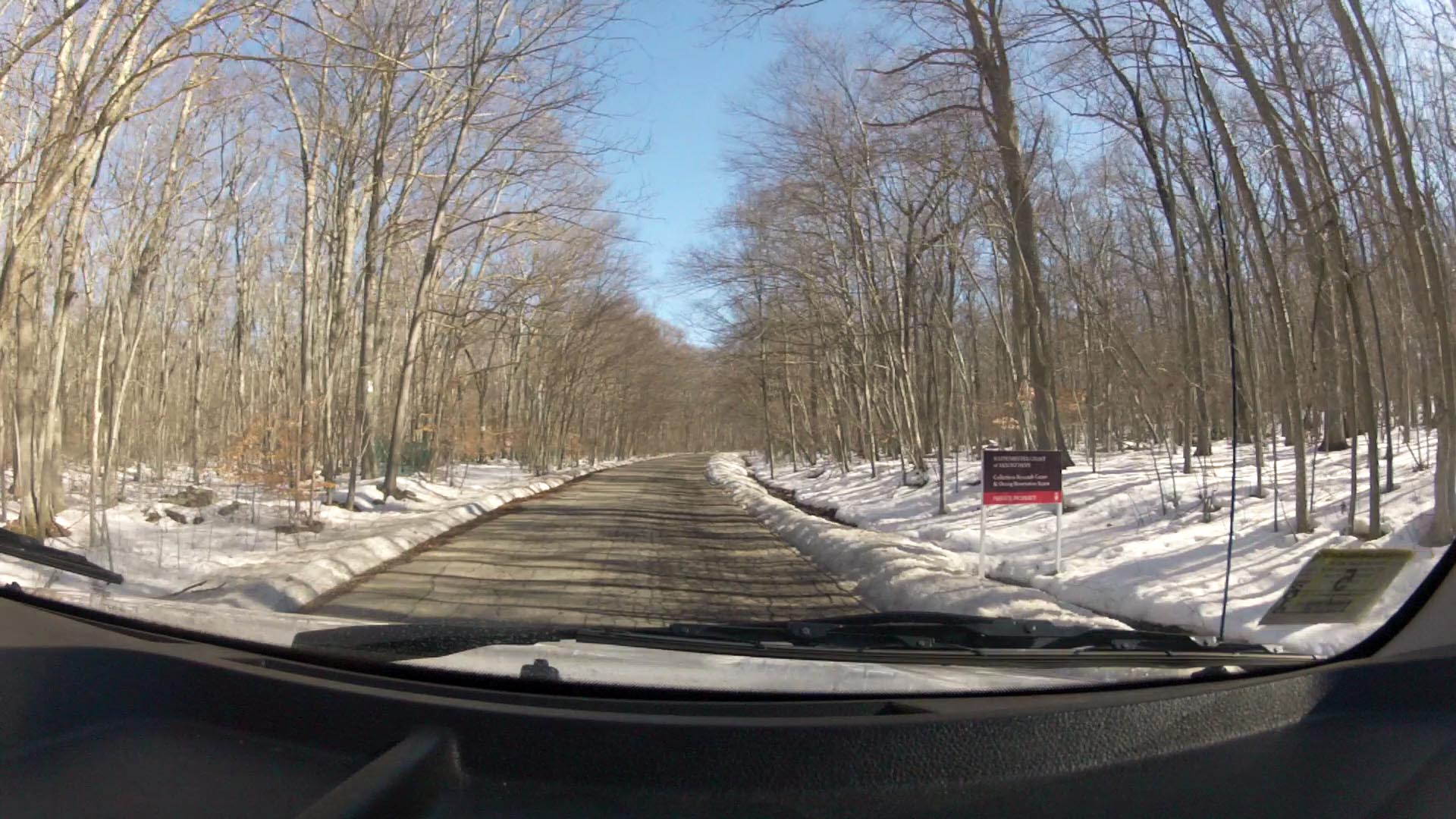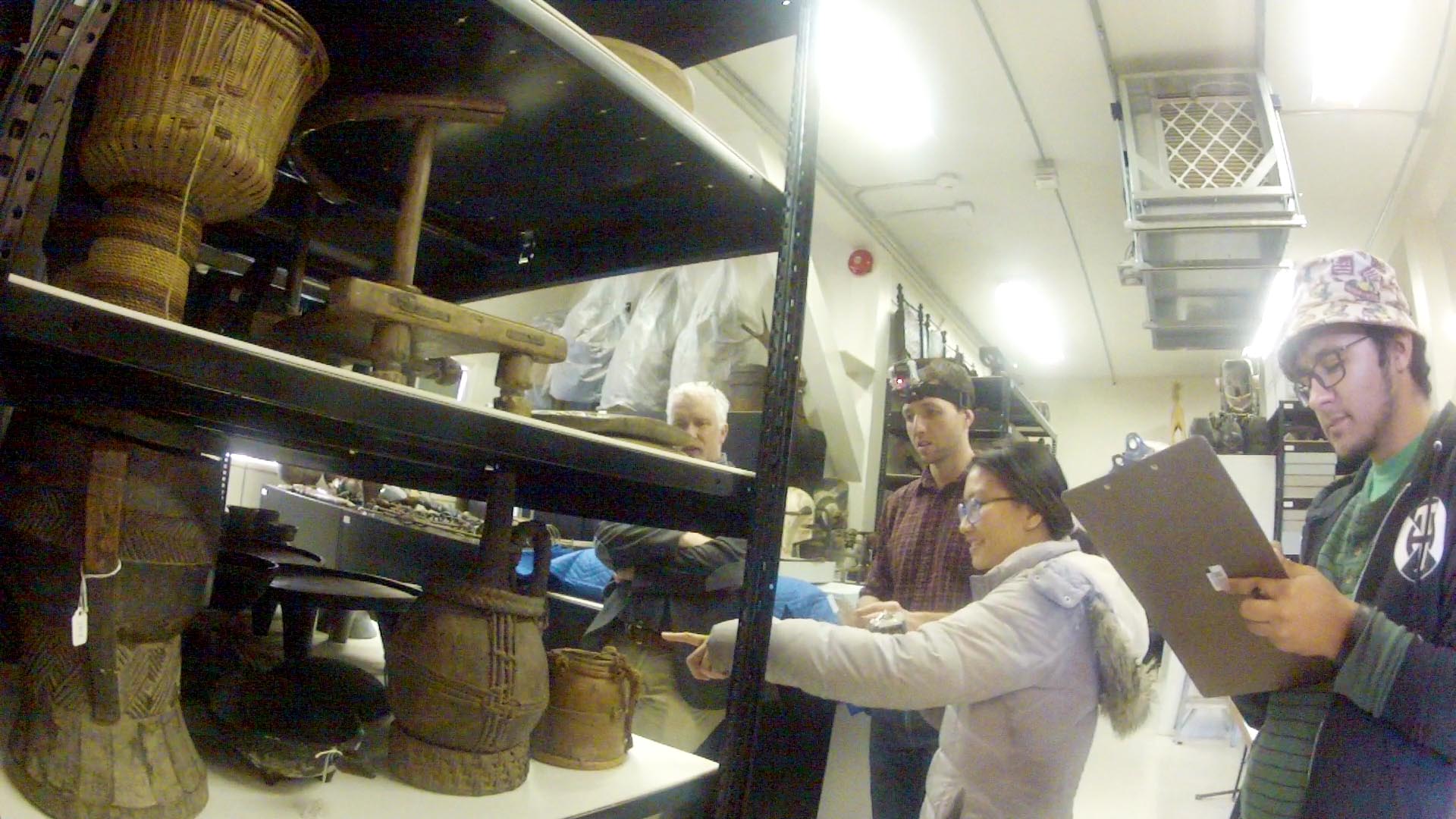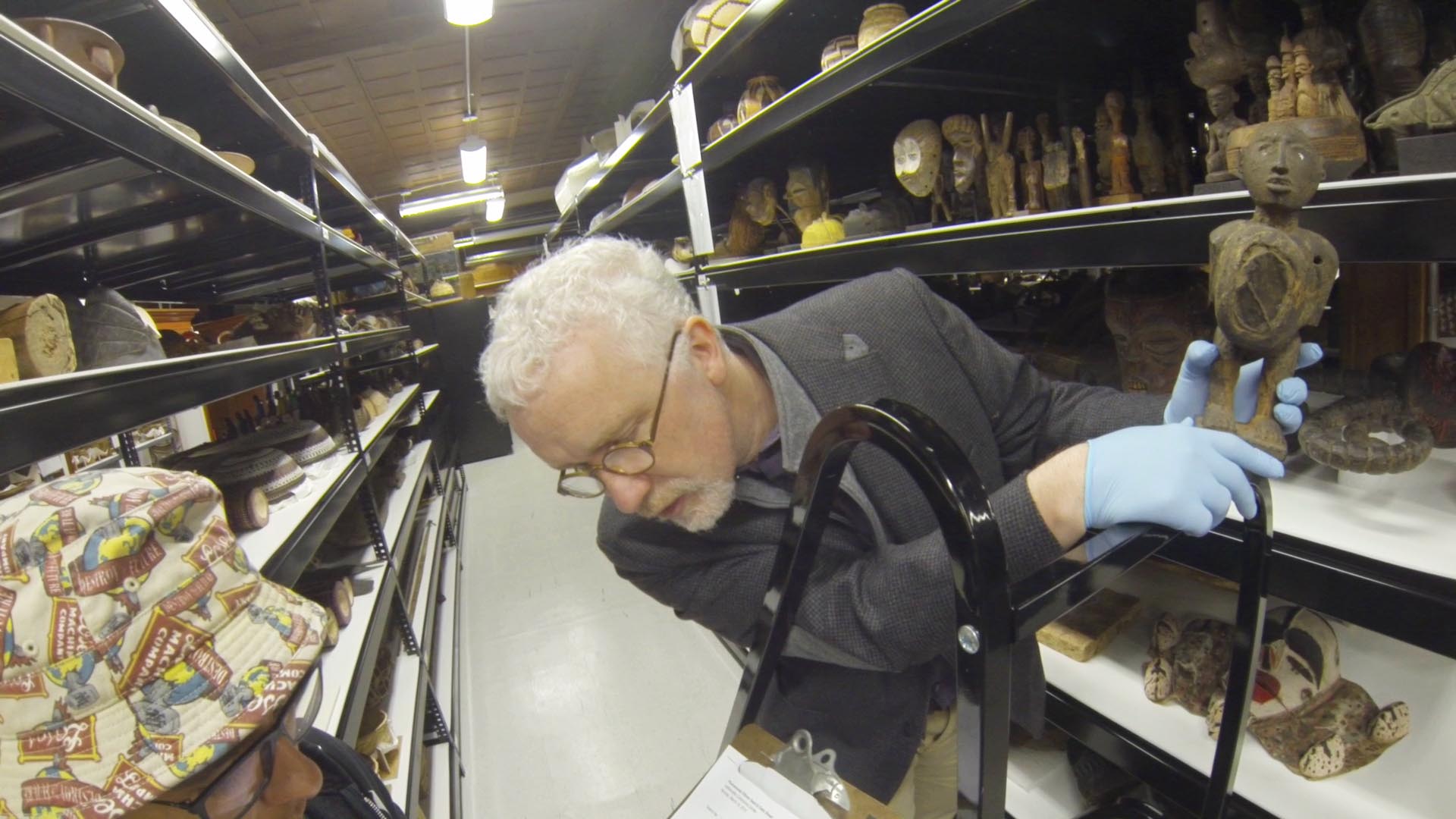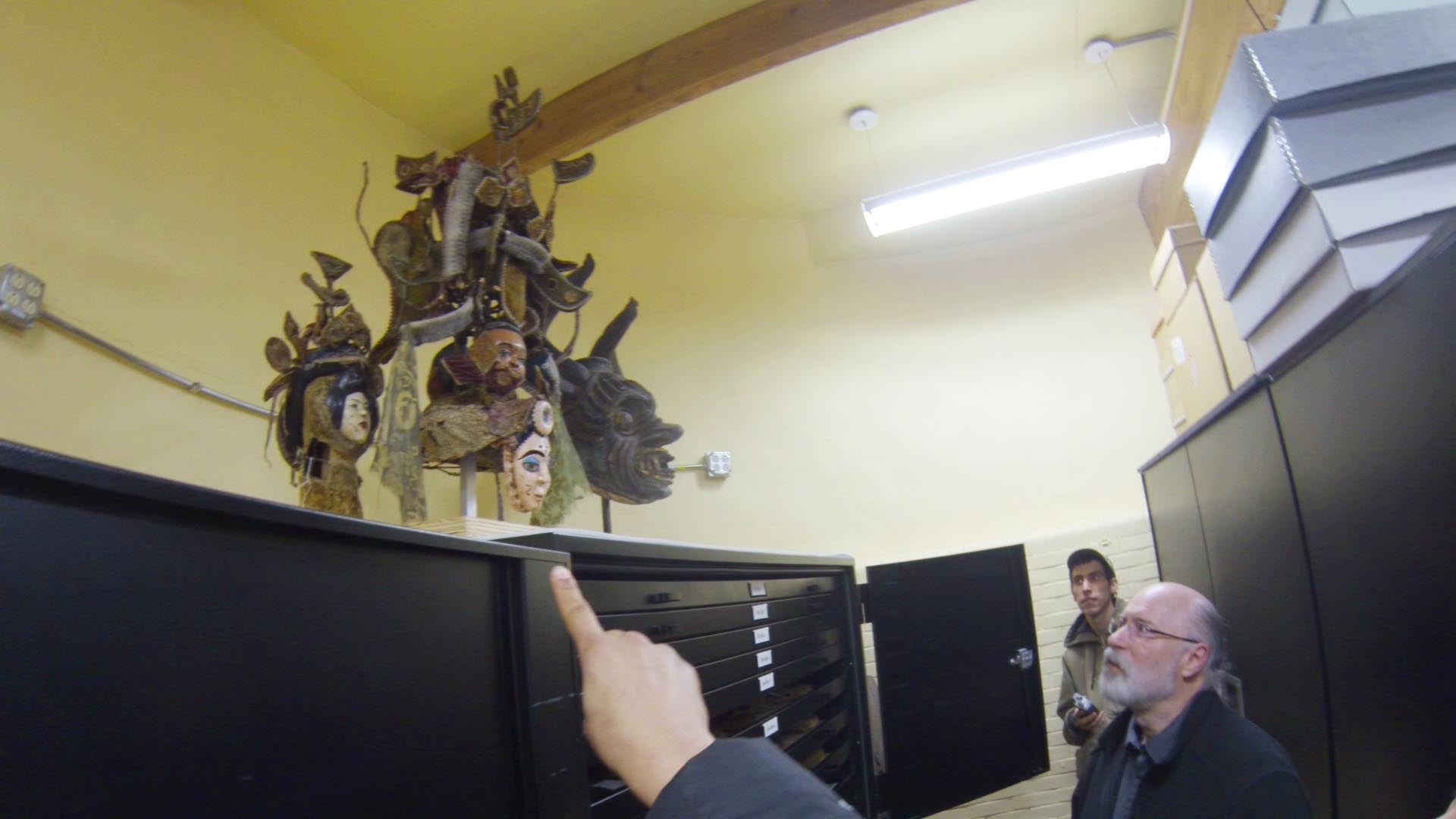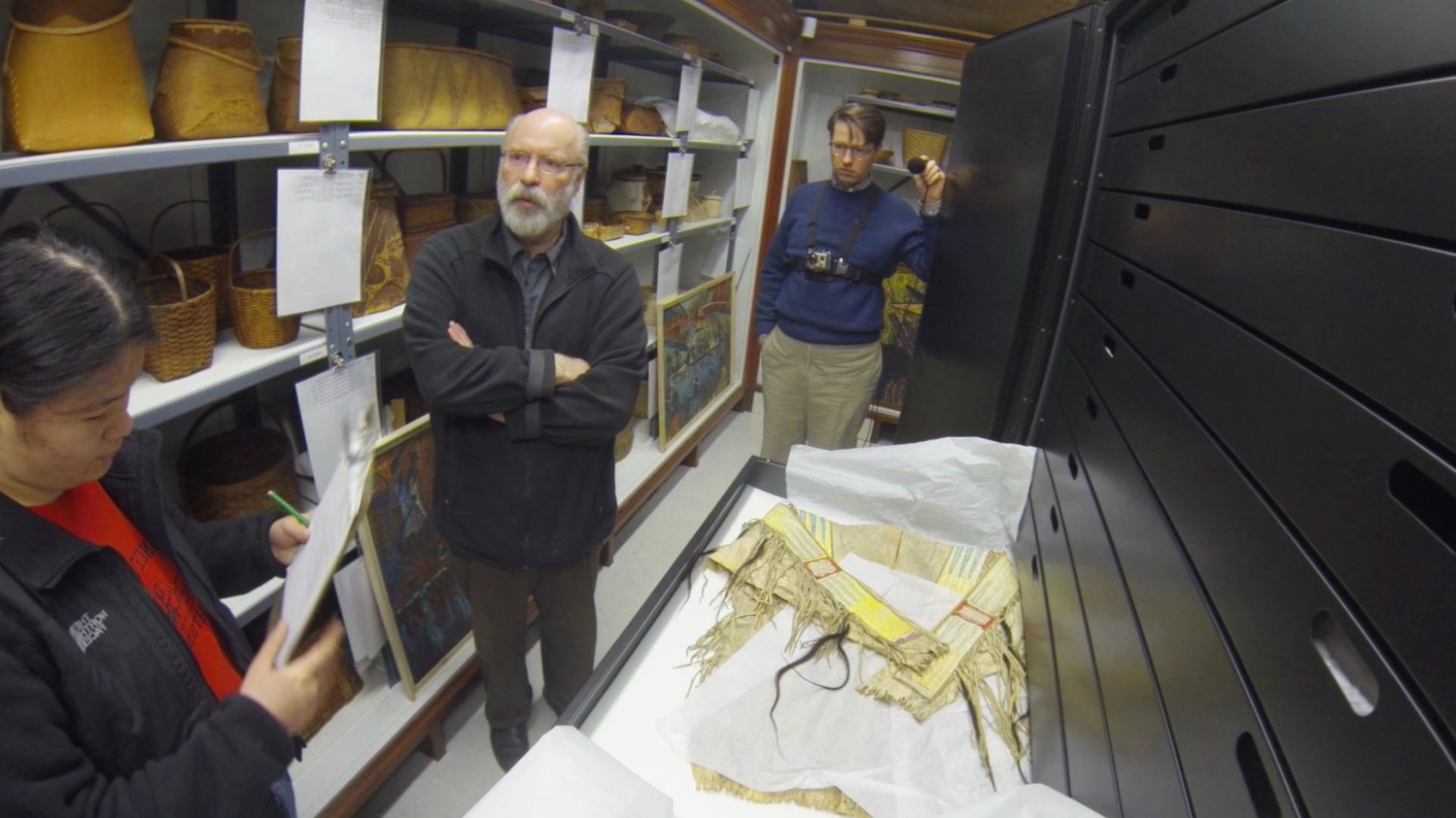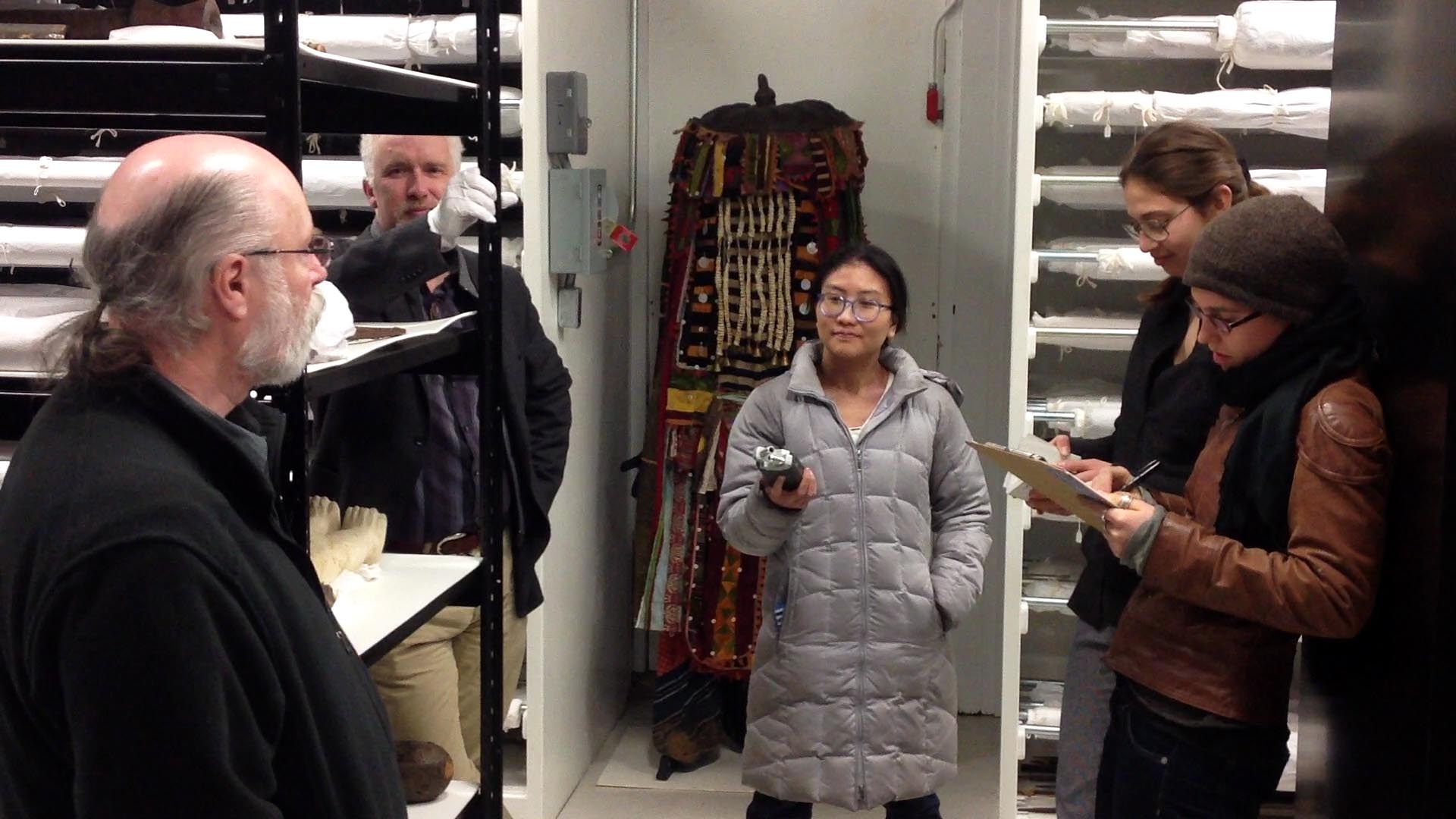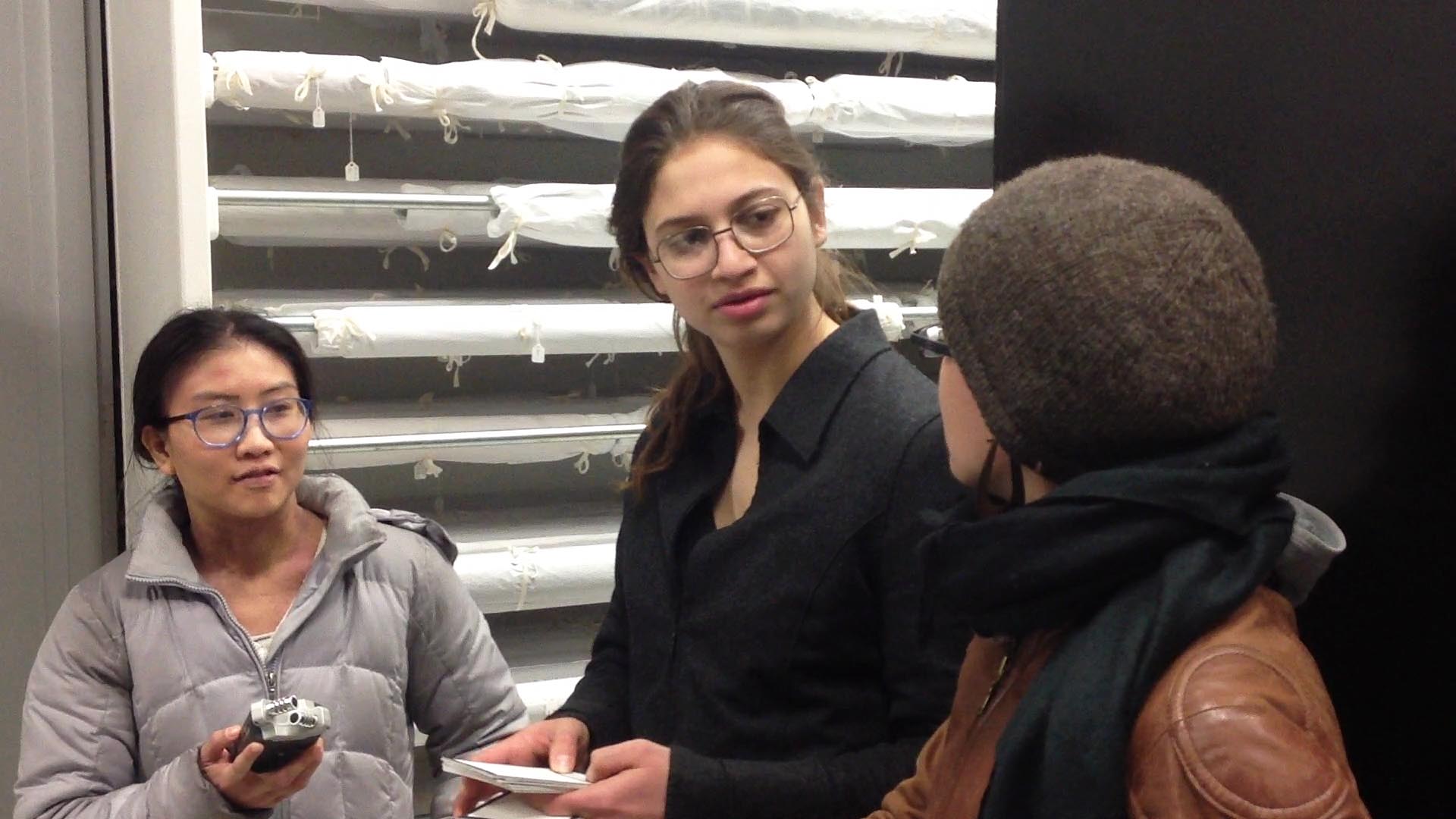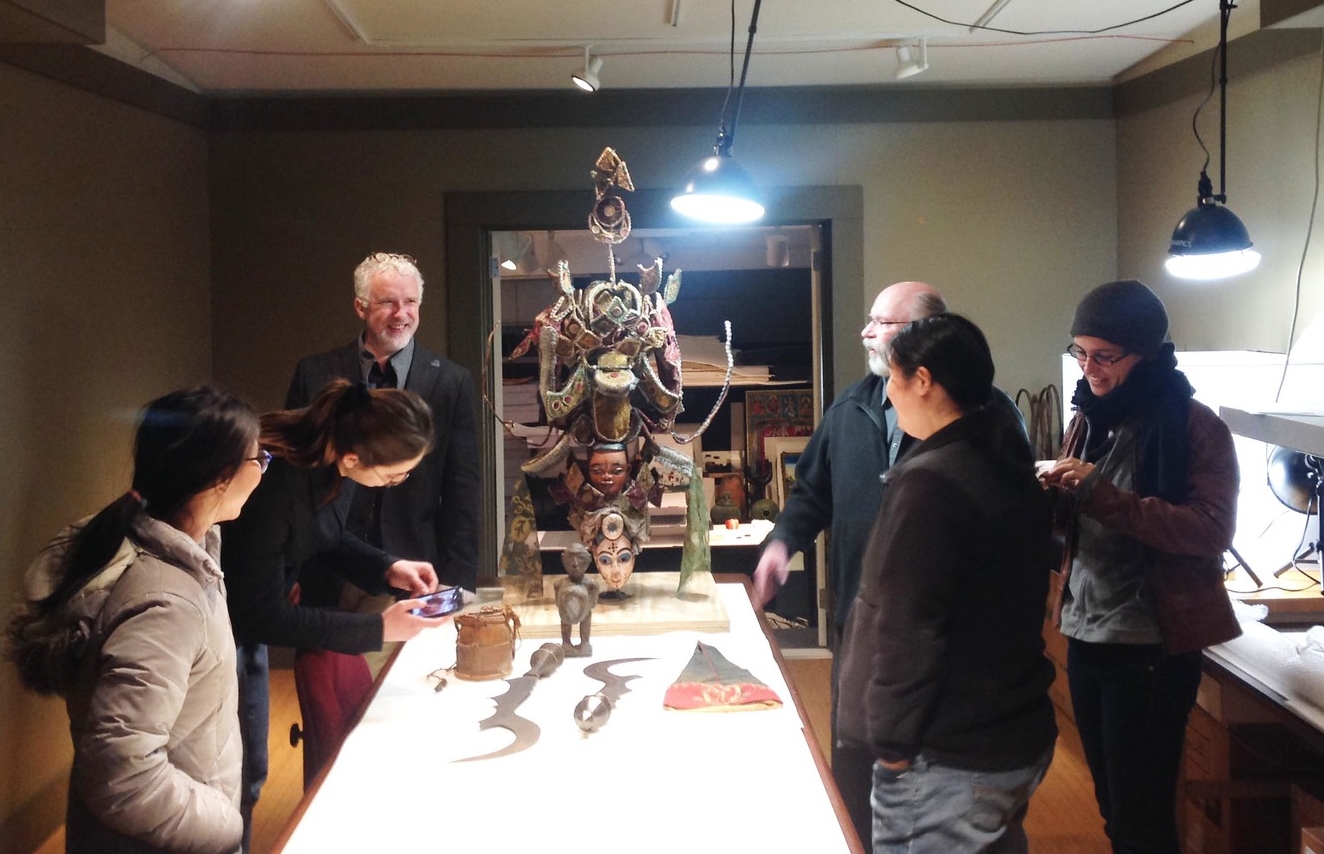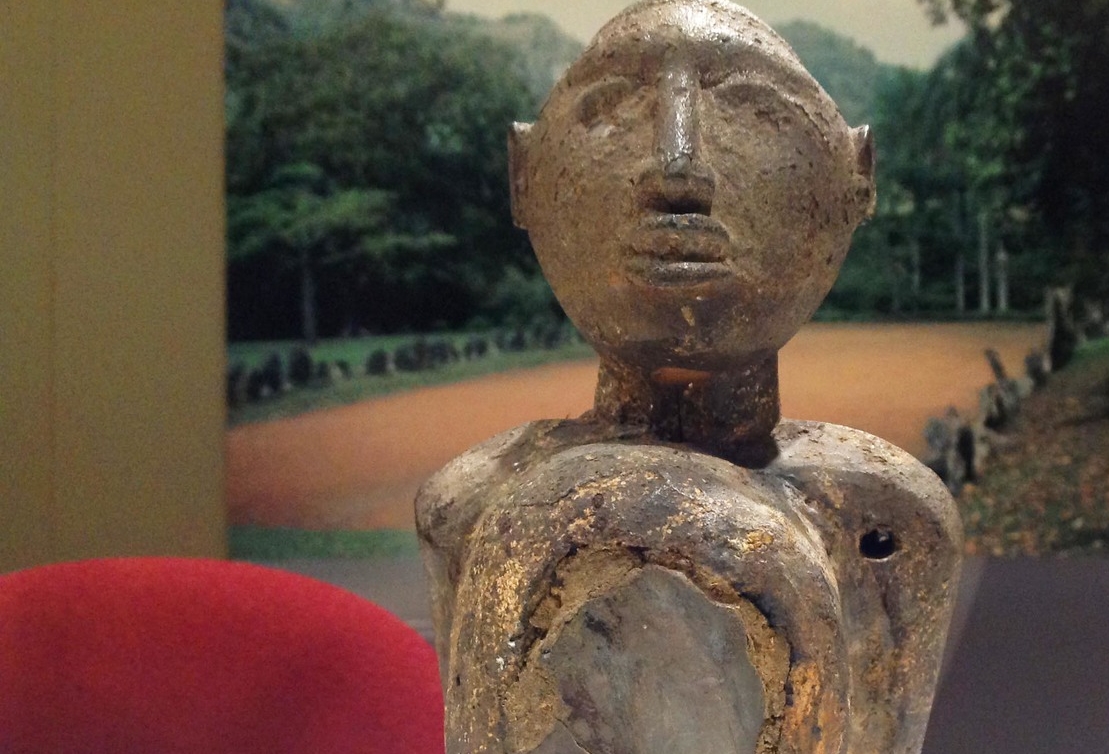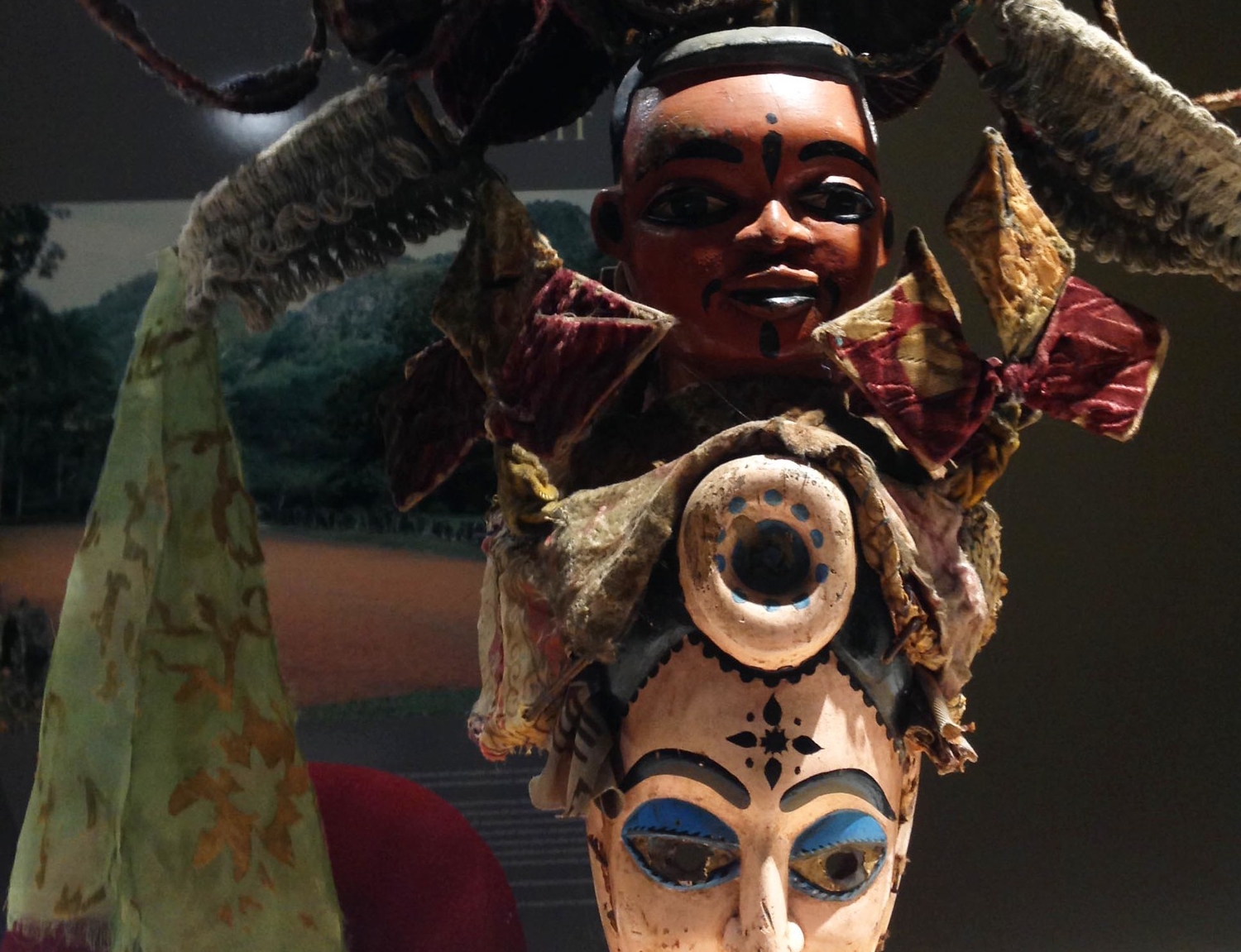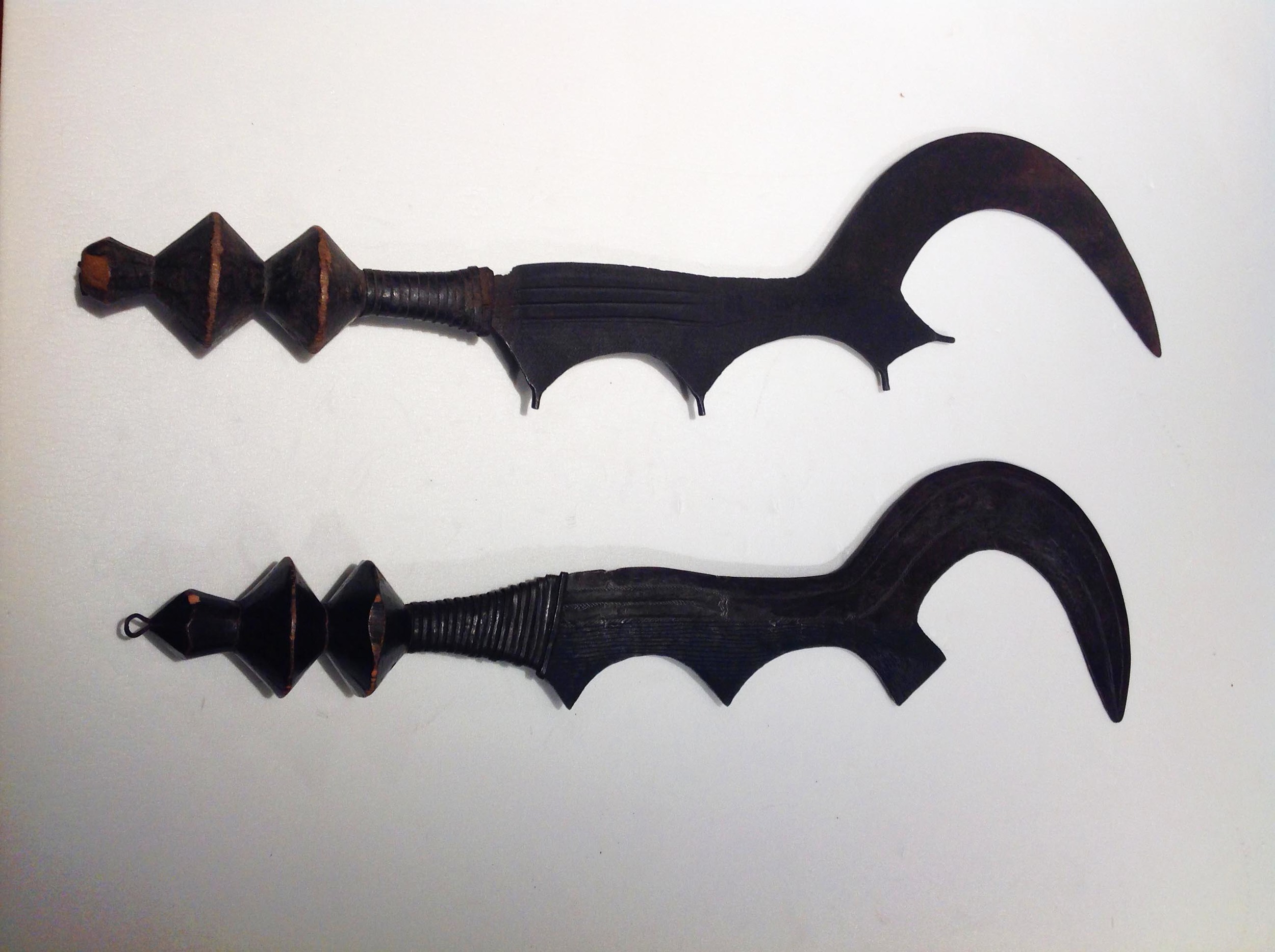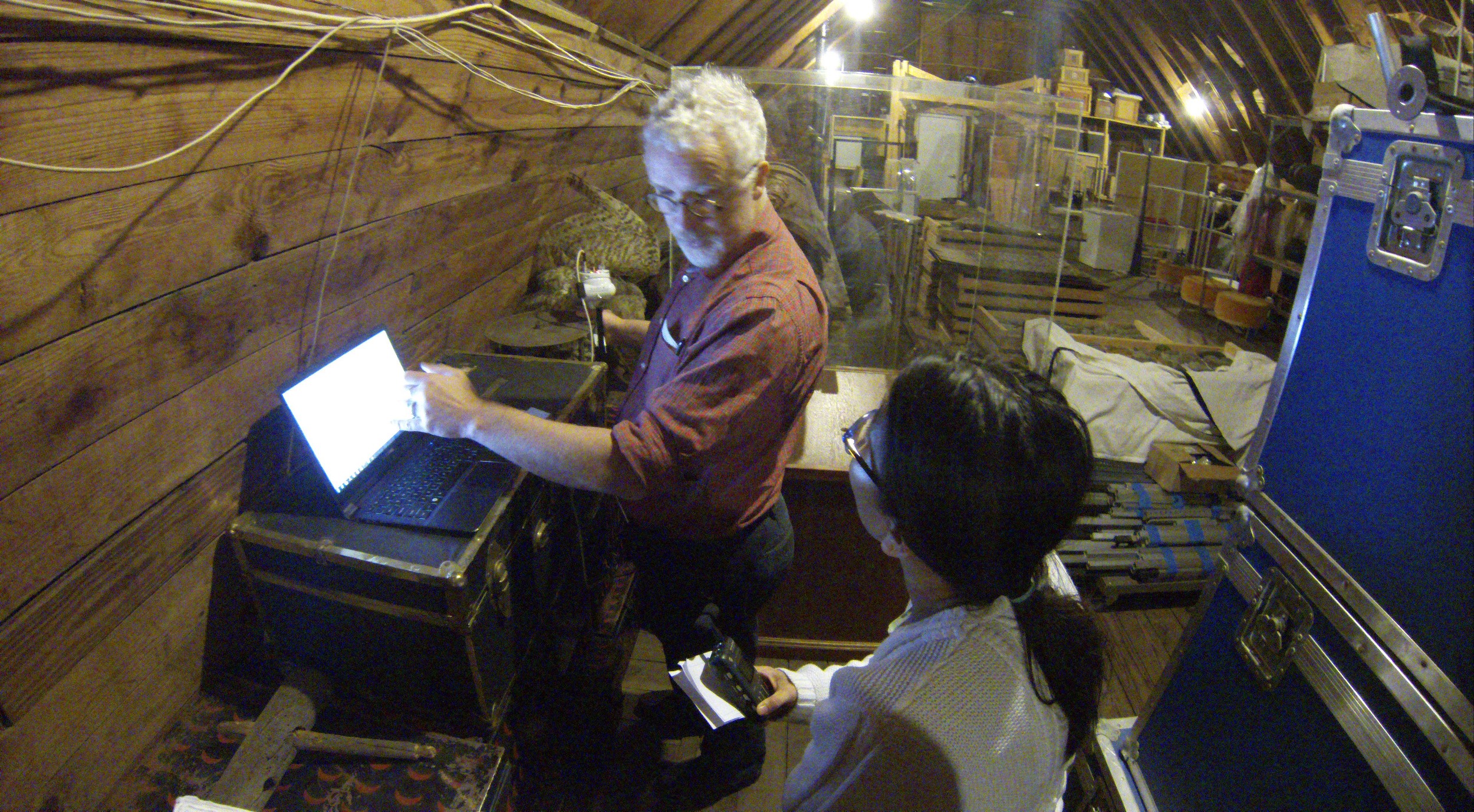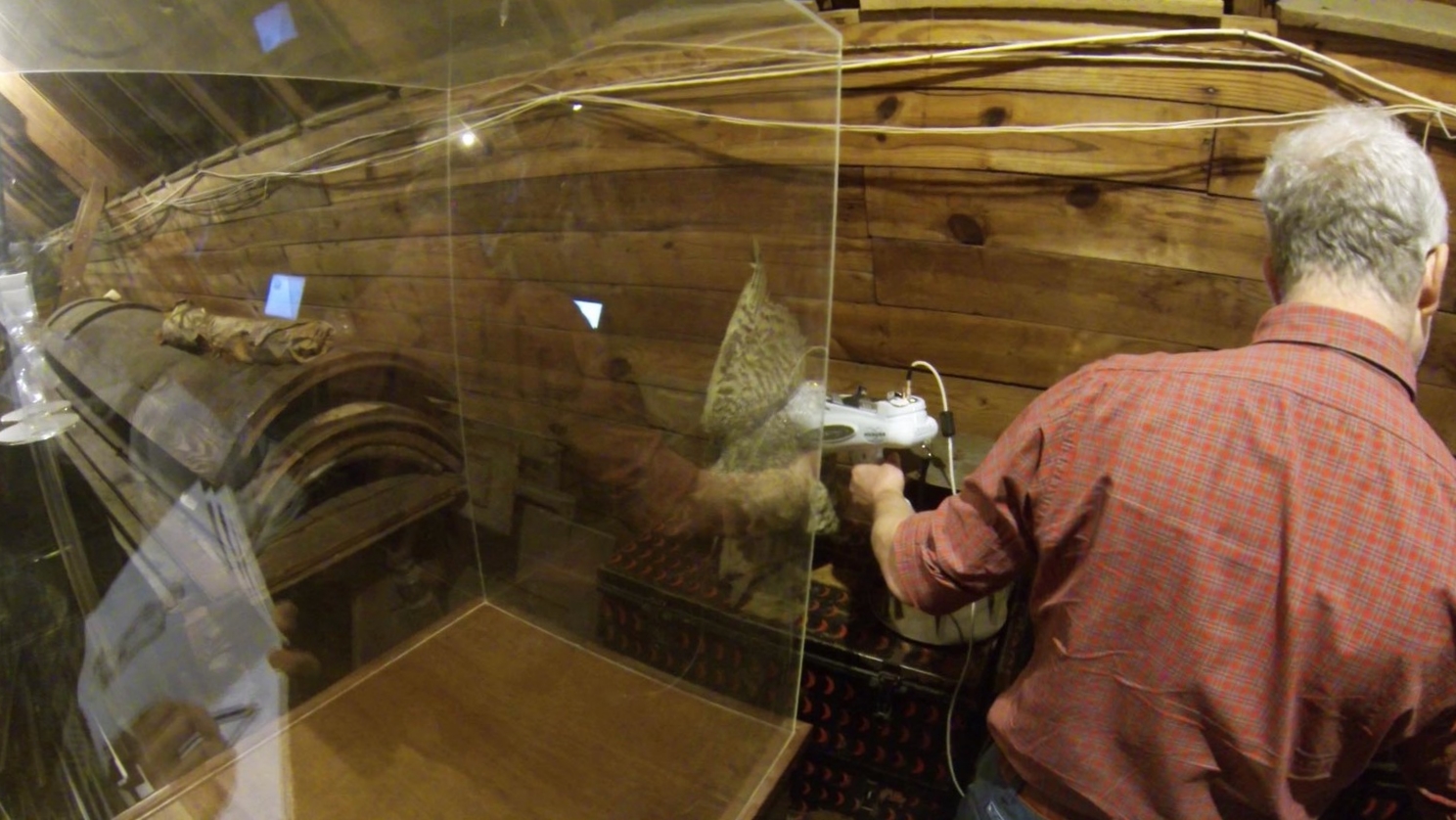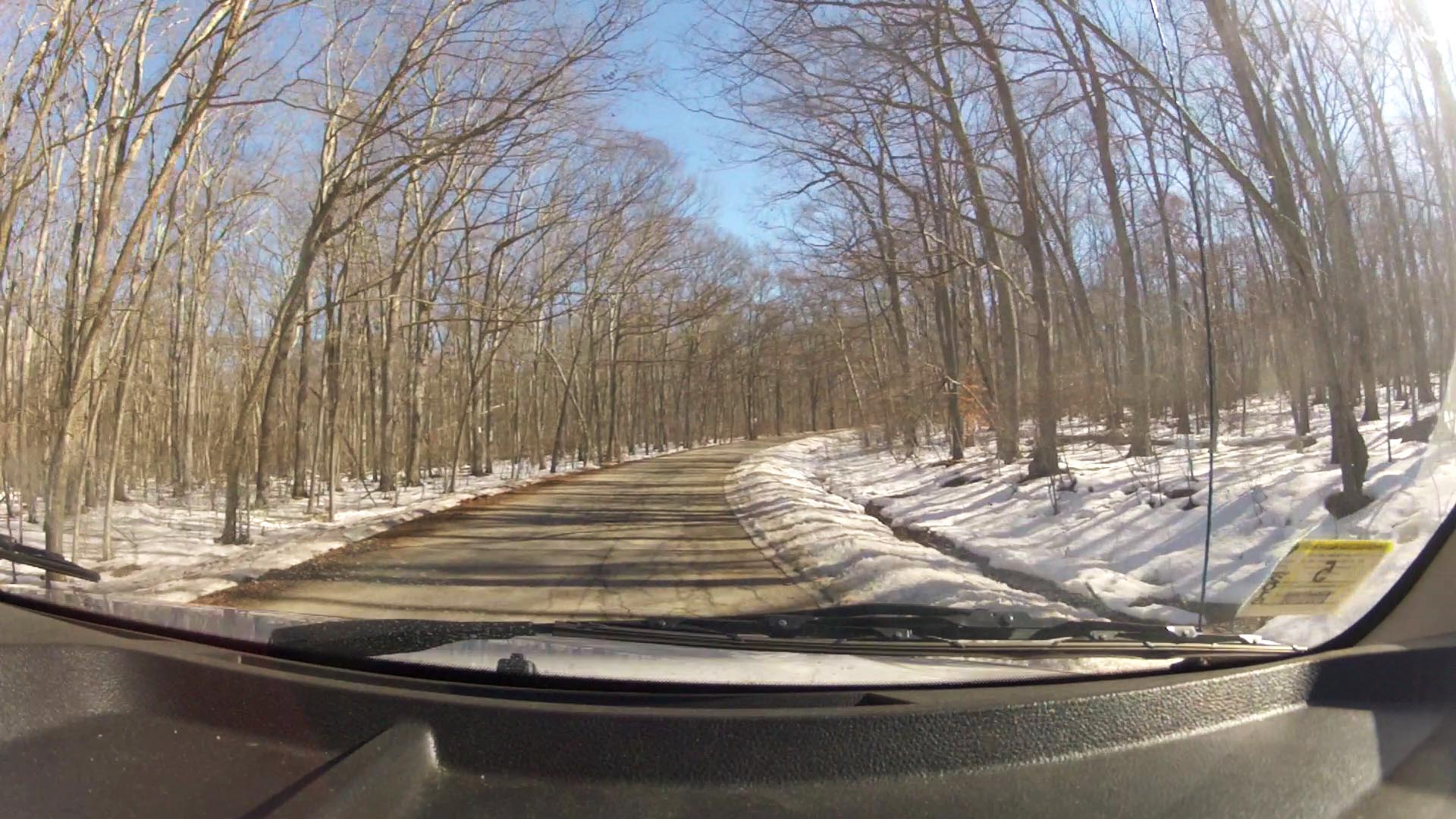Phenomenal Others Post-Search Update
The slideshow below offers a brief chronicle of our visits to the Haffenreffer Museum in Bristol, RI on March 9 and 16. The pictorial narrative that I present here only began to resemble a meaningful history after sharing thoughts with others (thanks especially to Emily, Chanelle, Robert, Nina and Dorin), and after I established a little bit of distance from the search experience itself:
The searches that we conducted led to the following six object finalists:
1. BaKongo nkisi nkondi figurine
2. Odelay mask
3. Baule mouse oracle
4. Ngala execution swords
5. Jacobin Phrygian cap
6. Owl-x-ray assemblage
Emily and I deliberated over these six finalists and discussed them at length. In our conversations, we kept coming back to the mouse oracle, the Jacobin cap, and the owl-x-ray assemblage. Something about those three encounters seemed to address a number of the ongoing concerns of our inquiry.
The mouse oracle is clearly a favorite of the museum world. It has been the focus of exhibitions and scholarly writing for several decades. I easily gathered up several books, ethnographic accounts, and catalogues related to the oracle, Baule history, life, and material culture. There is also a lot written about the Baule people’s resistance to, and complicity with, French colonial governance. But the mouse oracle also seems to reach beyond its history. It is a kind of object that prompted us to ask more questions about what it can do, rather than what it is, or what it means. It is the one object that seems to be clamoring for scenarios. We could imagine so many ways to approach the act of making it, learning about it, and using it to consult with others about the future. Who doesn’t need an oracle every now and then?
The Jacobin cap attracted us because it is such a strange outlier in the Haffenreffer collection. Not only is it is a very rare and fragile object (apparently only a few exist), but it also comes from a period in European history where the paradoxical relationship between imperialism and democracy rears its tumultuous head. As a wearable marker of one’s political identity, the Phrygian (Jacobin) cap also struck us as something that acts in the symbolic realm of marking a body (or cataloging a crowd of bodies) as either same or different, friend or foe.
As for the owl-x-ray assemblage that we came across in the hay loft, this was the only encounter among our searches in which the museum (or lost museum) materialized in a totally unexpected way. As Kevin told us, the hay loft is a kind of purgatory for objects that have no recorded history. He suspects that the owl might be a remnant of the Jenks Museum, but there is no real way of knowing. As for the introduction of the XLF ray gun, it was the only way for the curator to divine whether or not it was safe to handle the object. Arsenic poisoning is nothing to mess around with, and Kevin’s concern for it brought a technical object into our experiment that would have otherwise remained unseen.
Oracle. Cap. Owl-x-ray.
These are the phenomenal others that seem to have the most to say about the next stages of our inquiry. We think that they are the ones that indicate what direction to travel next (unless someone chooses to speak on behalf of any of the other objects found). And we will decide together what that direction is when we meet this week.
In the meantime, here are some ideas that have been on my mind:
“The rags, the refuse—these I will not inventory but allow, in the only possible way, to come into their own: by making use of them” (Walter Benjamin, The Arcades Project).
How does one make a lost museum? Is it something like walking a landscape, collecting vestiges along the way, and putting them together into a montage of contaminated representations?
Or is it to be something more experimentally systematic? Little cycles of abduction and controlled chaos? An assemblage of phenomena and instruments that makes new knowledge through its models?
Or both?
Whichever way it goes, one thing is clear. The scribblings are piling up. They form a new culture, and a history, at the same time that they make phenomena appear on the landscape. The scribblings are already becoming this lost museum’s book.
“Who wrote the lost book? Are there really any laws and systems? Scales, balances? What is the city made of? Sometimes it seems as if the city is the rubble of stories and memories, layers and layers, and the objects, all of the remnants of things are like the city’s skin.” (Jem Cohen, Lost Book Found)…
